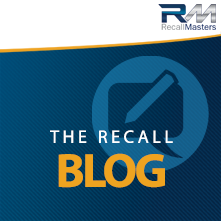Making Fans of Recall Customers – Nothing Worth Having Comes Easy (Part 2)
This is Part 2 of 2. Click here to view Part 1
In Part 1 (click here) of this series, I detailed the existing dealership viewpoint when it comes to consumers and the obstacles dealers are facing as related to the massive influx of recall business. In this blog, I’ll share the consumer viewpoint so dealers can better understand their state of mind and why, in the end, dealers should embrace recall customers.
Consumer Viewpoint
It’s clear to us all that the average consumer has valid concerns about owning and driving a vehicle that may cause death or injury if in an accident. Even if the issue is limited to falsifying emissions reports or replacing a part that presents no danger, the entire matter is a nuisance to the consumer. The range of emotions run from anger about their perceived loss in vehicle value to the fear and anxiety of placing the lives of themselves and passengers in a potentially life-threatening situation to the aggravation of having to take time off of work to take their vehicle back to the dealership. It is a sad fact that, despite the many dealers who provide an excellent customer experience, many Americans hate going into car dealerships. Some articles theorize that this is a key reason for the difficulty auto manufacturers are experiencing in recall repair compliance.
That being said, a consumer who wishes to repair their recalled vehicle with no money out of pocket and in full compliance to safety standards has no choice but to visit a franchised dealership for factory-authorized repairs. As with Takata, due to the limited supply of replacement airbags, many consumers are forced to wait as long as 6 months for replacement parts to be available. This forces the consumer to make an impossible choice: continue to drive an unsafe vehicle or stop driving the vehicle until it is repaired.
For many, a vehicle is necessary to get to work, pick up children from school, get back and forth to doctor appointment, etc. And, without alternative transportation, the consumer simply has no choice but to drive the vehicle despite its potential danger. In addition, car payments aren’t suspended when the vehicle is not in operation. While loaner vehicles are an option, most dealerships don’t have the resources to provide a replacement vehicle for the large volume of consumers who are awaiting repairs for an extended period of time. As expected, these consumers face a frustrating and daunting set of circumstances with little good news for the foreseeable future.
It’s not difficult to see that dealers are encountering consumers who are already on edge by the time they come into the dealership for those recall repairs. Without a doubt, every consumer interaction could lead to additional revenue from vehicle sales or additional repairs necessary for safe and optimal vehicle operation. However, while the situation is a tinderbox, it’s in the dealer’s best interest to tread lightly, respecting the sensitivity of the situation. After all, the dealership is perceived as an agent of the OEM. In their eyes, you’re the cause of this anxiety. In truth, dealerships aren’t responsible for these recalls, but they definitely are the sounding board for the consumer’s frustration. What seems like an obvious tinderbox to most can also be overlooked by dealership staff focused solely on a sales opportunity. While, in some instances, a vehicle sale may be in the consumer’s best interest, it’s easy to understand that some consumers may characterize the dealership as opportunists and be offended by being approached by the sales team without employing proper sensitivity. I’m not suggesting that these consumers won’t buy a car… I’m just suggesting that care be taken as far as the time and approach to solidifying customer relationships. That it should be handled in such a way that the customer is more inclined to entertain the idea of a vehicle purchase from the sales staff, especially if positioned as in the customer’s best interest.
Bottom Line
At first glance, the clash of these two perspectives places the consumer and the dealership at odds. That line of thinking is not only counterproductive to the effort; it couldn’t be further from the truth once the value of customer relationships is factored. Simply stated, compelling data suggests that there are plenty of residual benefits for those dealerships that handle recalls efficiently and with an exceptional level of service throughout the process.
The fact is, vehicle safety should be at the top of the priority list for manufacturers, dealerships and consumers. Safer highways benefit everyone in the automotive community. And, while the obstacles and limitations are not to be viewed lightly, it’s clear that dealerships will need to shoulder the responsibility of cleaning up the mess alongside consumers and manufacturers. Assigning blame to any one entity provides no remedy to the consumer. This is a unique opportunity for dealerships to assume the role of consumer advocate, righting a wrong that ultimately serves some common goals and solidifies a future relationship.
One day, that same recall consumer will be in the market for a new or pre-owned vehicle or turn to social media to inform their friends and family about how they were treated at your dealership – you don’t want to be on the wrong end of that conversation. Whether or not additional service and sales revenue materialize from a focused recall management initiative, helping consumers navigate the path to vehicle safety is our collective responsibility. Let’s arm ourselves for the recall revolution taking shape. Some dealerships will rise to the challenge while others would rather abandon it. For those of us that accept a responsible role in the automotive industry, the hard work yields long term opportunity. Recalls aren’t going away any time soon, so, for those that recognize the importance of building long-term market share through conquest business, doing the right thing by consumers also bears fruit.


